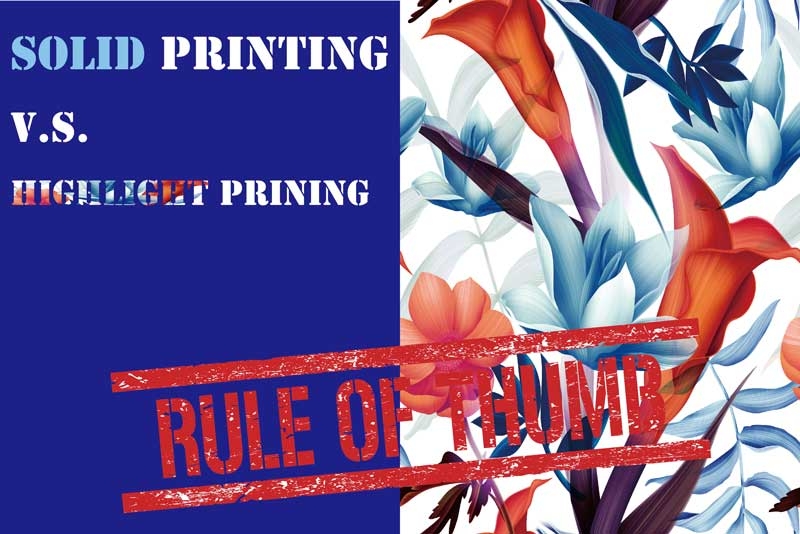General rule of thumb: solid printing V.S highlight printing

Flexo printing is about a combination of factors working together in harmony to reach an optimal printing result. To many, there are just too many factors to consider, making the process complicated and hard to master. For this reason, it has scared off many printers and converters in attempting flexo printing. Yes, there are many factors to consider. However, there is always a general rule of thumb. As long as one gets familiar with the rule of thumb and follows it through, one wouldn’t sway too far away from a decent flexo print. Today, we are going to discuss the general rule of thumb for printing solid versus printing highlights.
There are a few important factors that will affect the quality of the print. That will be plate surface, plate thickness, plate hardness, tape hardness, and ink viscosity.
Plate Surface – The plate surface can have different designs such as micro screening, surface texturing to increase the plate surface area with the goal to deliver more ink. Another type of plate design is the flat top dots, which is designed to minimize the amount of dot gain.
Plate thickness – The plate thickness provides sturdiness during print. The thicker the plate the less sturdiness it has, and therefore providing more cushion.
Plate hardness – For the plate hardness, in general, the softer plates tend to have a better ink delivery than the harder plates. The harder plate provides a more robust structure for the plate dots, causing less squeezing during print.
Tape hardness – The tape hardness tends to be the opposite of the plate hardness. A softer tape is recommended for a harder plate, and harder tape is recommended for a softer plate. The main purpose of the is to tape is to stick the plate onto the print cylinder or print cylinder and at the same time balance, the amount of cushion the plate exerts onto the print sleeve or print cylinder.
Ink viscosity – With the same amount of ink, higher viscosity means higher pigment concentration, therefore providing a richer color.
General Rule of Thumb: Solid Print
During a solid print, the goal is to have a high solid ink density so that the print can look full without empty spaces. Putting down more ink and therefore more pigment will generally help with raising the solid ink density. However, with the right combination less ink can achieve the same result. The
Plate Surface – micro-screening, surface texture
Plate thickness – thicker (1.7, 2.54)
Plate hardness – softer
Tape hardness – hard, medium
Ink viscosity – higher viscosity
General Rule of Thumb: Highlight Print
During a fine highlight print or a high-definition print, the goal is to place a thin layer of ink on top of the substrate and to obtain a minimal dot gain, and to form a smooth transition in areas where gradient designs are present.
Plate Surface – flat top dots
Plate thickness – thinner (1.14)
Plate hardness – harder
Tape hardness – medium soft, soft
Ink viscosity – lower viscosity
It is rare for print jobs to have only solid designs or highlight / high-definition designs. Therefore, different combinations of plate, tape, and ink viscosity are utilized to achieve the best print result. The combination will vary according to each individual design, but the general rule of thumb will not change.

Article by Daywey Chen, KYMC


























